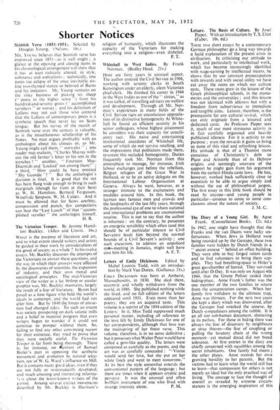The Victorian Temper. By Jerome Hamil- ton Buckley. (Allen and
Unwin. 16s.)
WHAT is the purpose of literature and art, and to what extent should writers and artists be guided in their work by considerations of the good of society as a ∎∎ hole ? In his twelve essays. Mr. Buckley discusses the attempts of the Victorians to answer these questions, and the way in which their answers were affected by the discoveries of scientists, the expansion of industry, and their own moral and sociological principles. The mid-Victorian view of the writer as a lay bishop or secular prophet was, Mr. Buckley maintains, largely the result of a fear of literature. Byron had posed as a lone figure who held the world's ideals in contempt, and the world had run after him. But by 1840 the forces of attrac- tion had changed sides. To such an extent was society prospering on dark satanic mills and a belief in material progress that even writers began to wonder if it could not continue to prosper without them. So, failing to find any other convincing reason for their existence, they tried to prove that they were socially useful. The Victorian Temper is far from being thorough. There is, for instance, no mention of Samuel Butler's part in opposing the aesthetic movement and evolution by natural selec- tion, nor of W. G. Ward's influence on Mill. But it contains many good ideas, even if they are not fully or systematically developed, and much amusing and interesting informa- t: In about the lessor-known writers of the period. Among several extinct movements described by Mr. Buckley is Harrison's
religion of humanity, which illustrates the capacity of the Victorians for making everything into a religion—even disbelief. P. T.










































 Previous page
Previous page